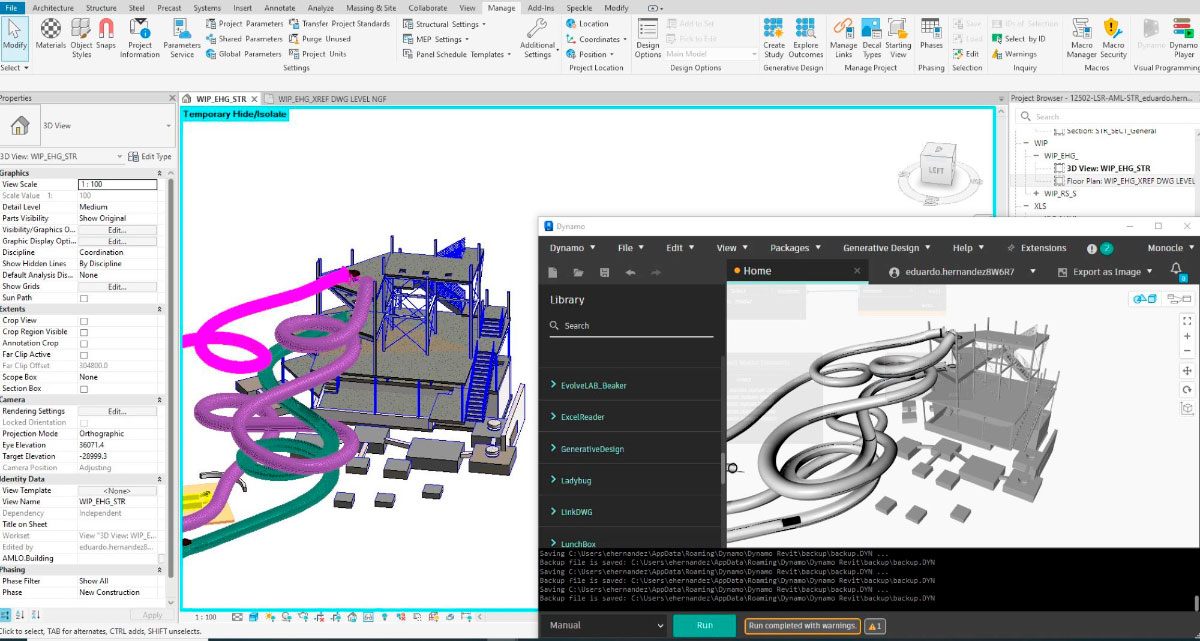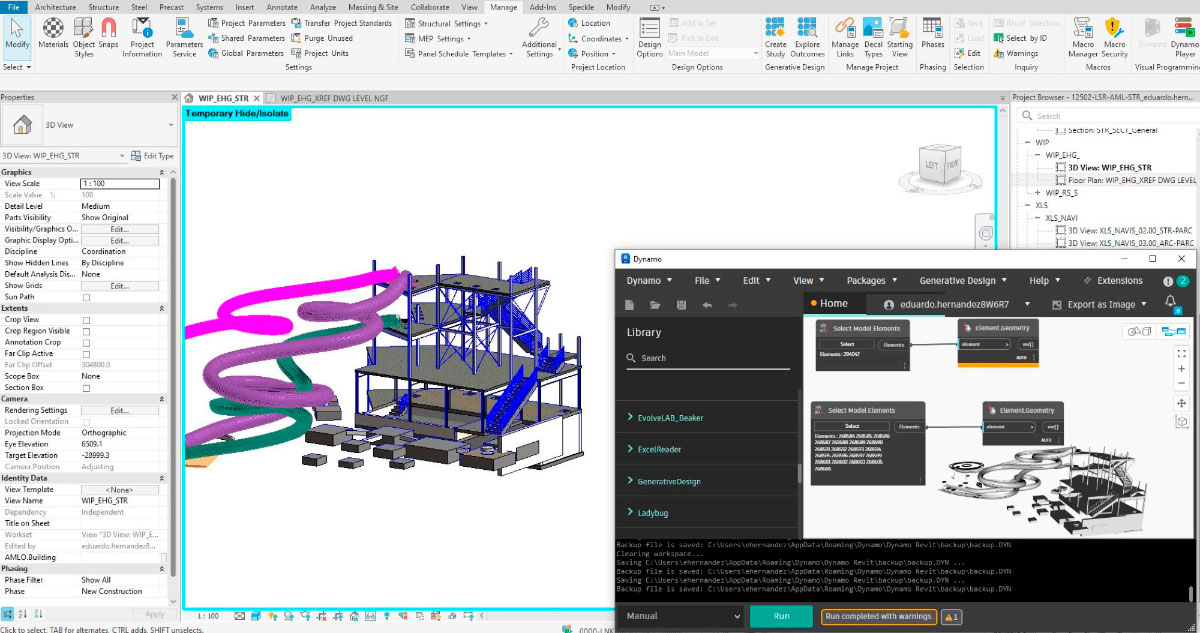The integration of automation tools in architectural and engineering projects and in construction processes with BIM (Building Information Modelling) methodology, marks a turning point in efficiency. With the launch of Revit 2026, Autodesk reinforces its commitment to interoperability and workflow optimisation. In this system, Dynamo 3.4.1 emerges as one of the key elements.
Performance optimisation and script debugging
One of the most notable new features is the improved performance analysis, thanks to the deeper integration of TuneUp, an extension that allows the execution time of each node in the scripts to be visualised. This functionality is crucial for identifying bottlenecks in complex processes and facilitates debugging and optimisation of Dynamo graphs. When automating large volumes of data – such as parameterised façade generation or structural analysis – every millisecond saved translates into increased productivity.
Stronger package management and compatibility
The management of external libraries is another point of improvement. Dynamo 3.4.1 incorporates a warning system that displays detailed package compatibility information, reducing errors resulting from the use of obsolete or incompatible versions. This update is particularly relevant for companies such as Amusement Logic, where the integration of energy analysis or digital manufacturing tools depends on multiple external plug-ins.

PythonNet3: modernisation and new capabilities
The leap to PythonNet3 as the underlying Python engine is a significant step forward. In addition to improving overall performance, this upgrade enables compatibility with advanced libraries, such as NumPy and pandas, and extends the possibilities for data analysis and mathematical processing within Dynamo. However, it is important to note that some older scripts may require adjustments to adapt to changes in the API (Application Programming Interface).
New features for parametric design
Dynamo version 3.4.1 introduces new nodes focused on geometric control, such as tools to generate custom orthogonal panels or apply complex transformations with greater precision. These enhancements are particularly useful in the design of architectural envelopes or modular structures, where flexibility in geometry manipulation is critical.
Data validation and improved user experience
The inclusion of automatic data type validation on custom nodes reduces common errors in scripts shared between teams. In addition, the interface has been refined with aesthetic and functional tweaks, such as automatic default naming of input nodes, which streamlines graph organisation and minimises unnecessary warnings.
In short, Dynamo 3.4.1 saves time, reduces margins of error and expands creative possibilities.
By Eduardo Hernández García, Senior Structural Modeller in Amusement Logic’s Architecture Dept.






